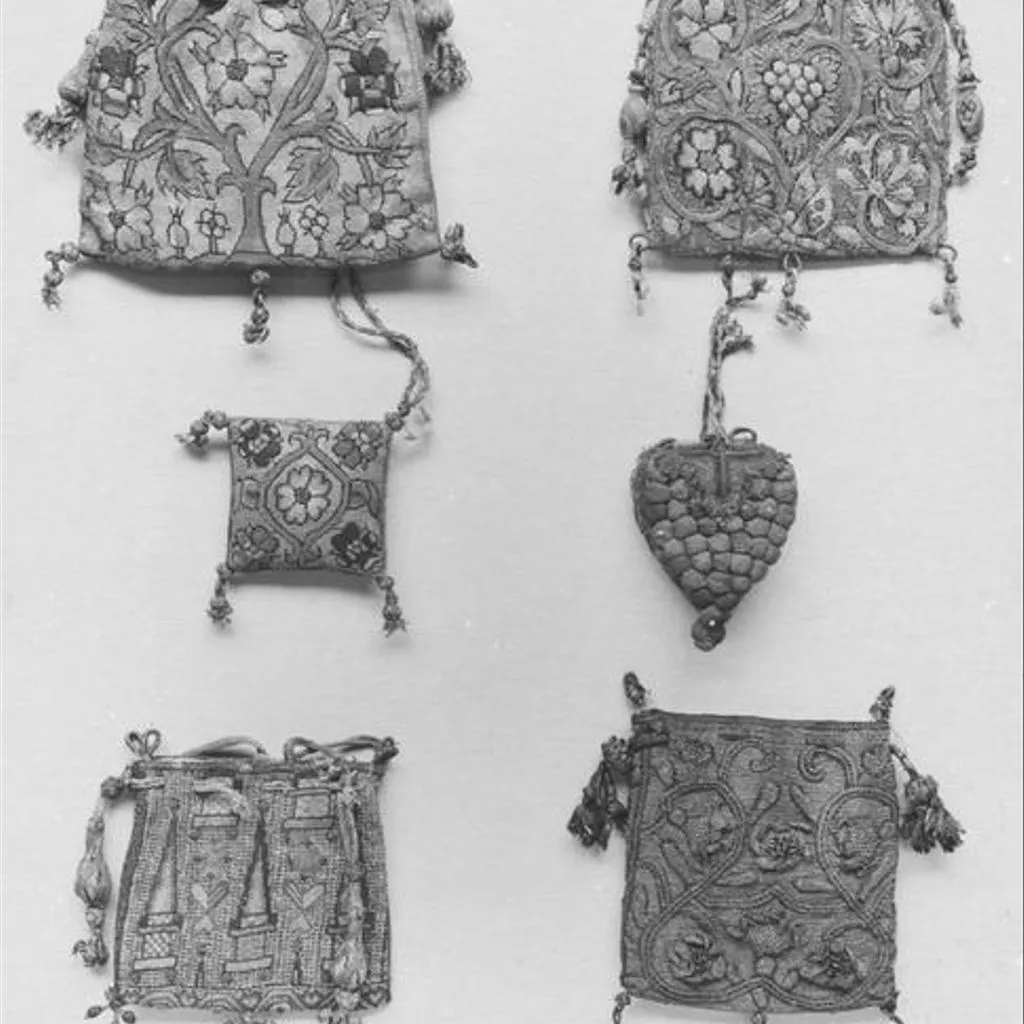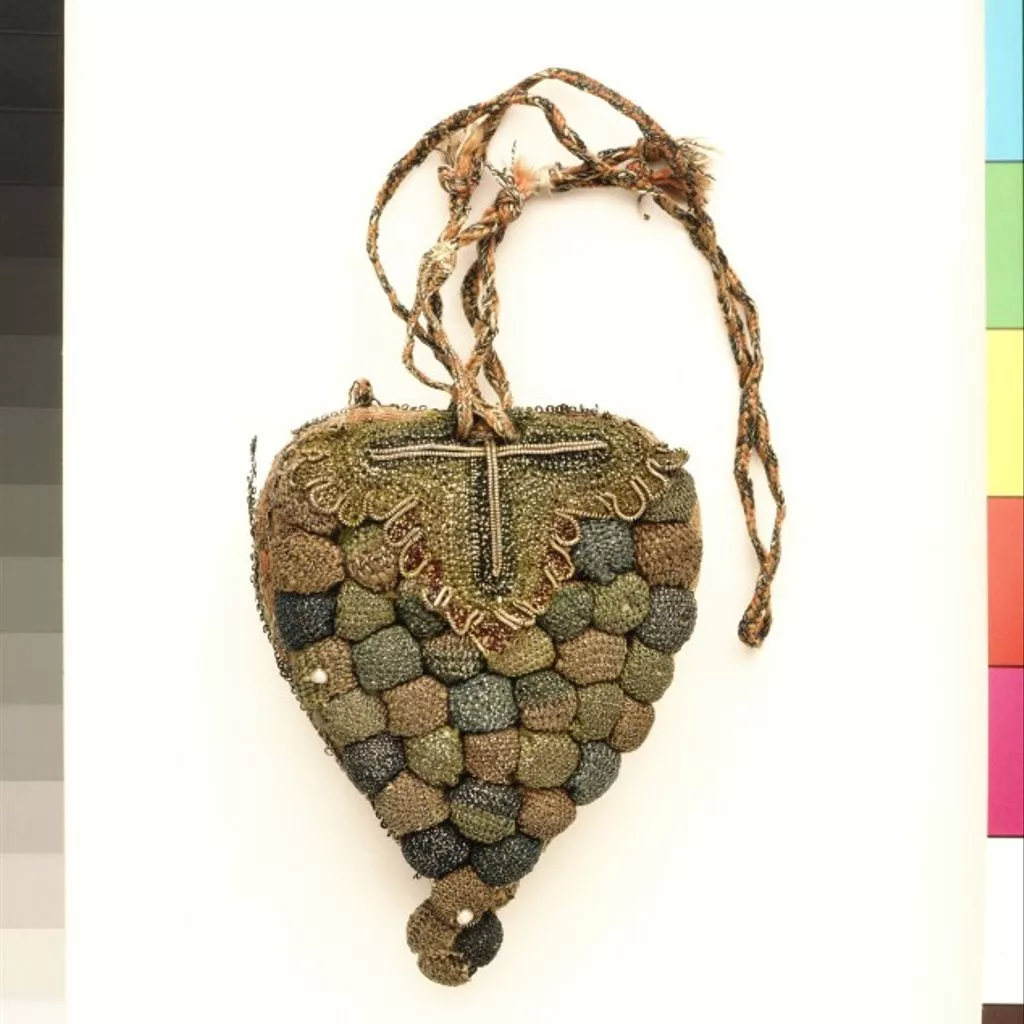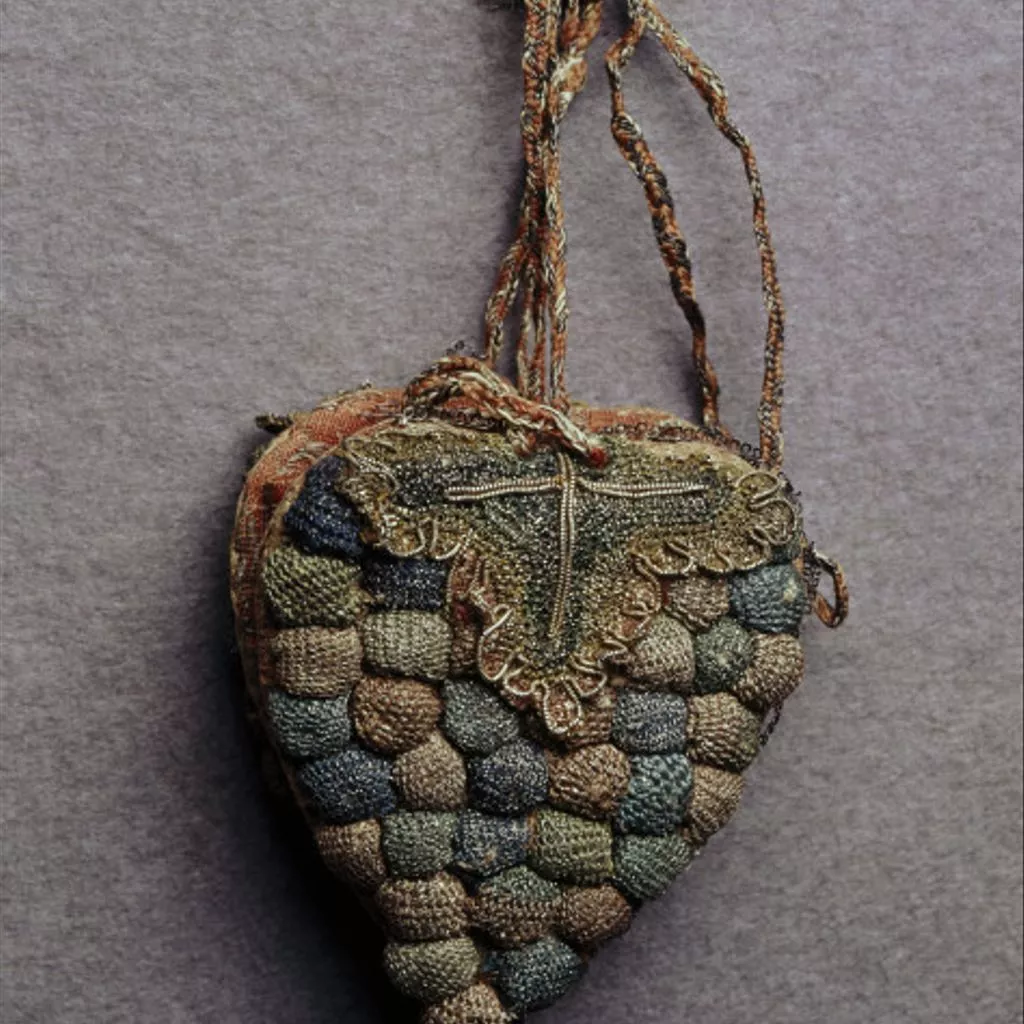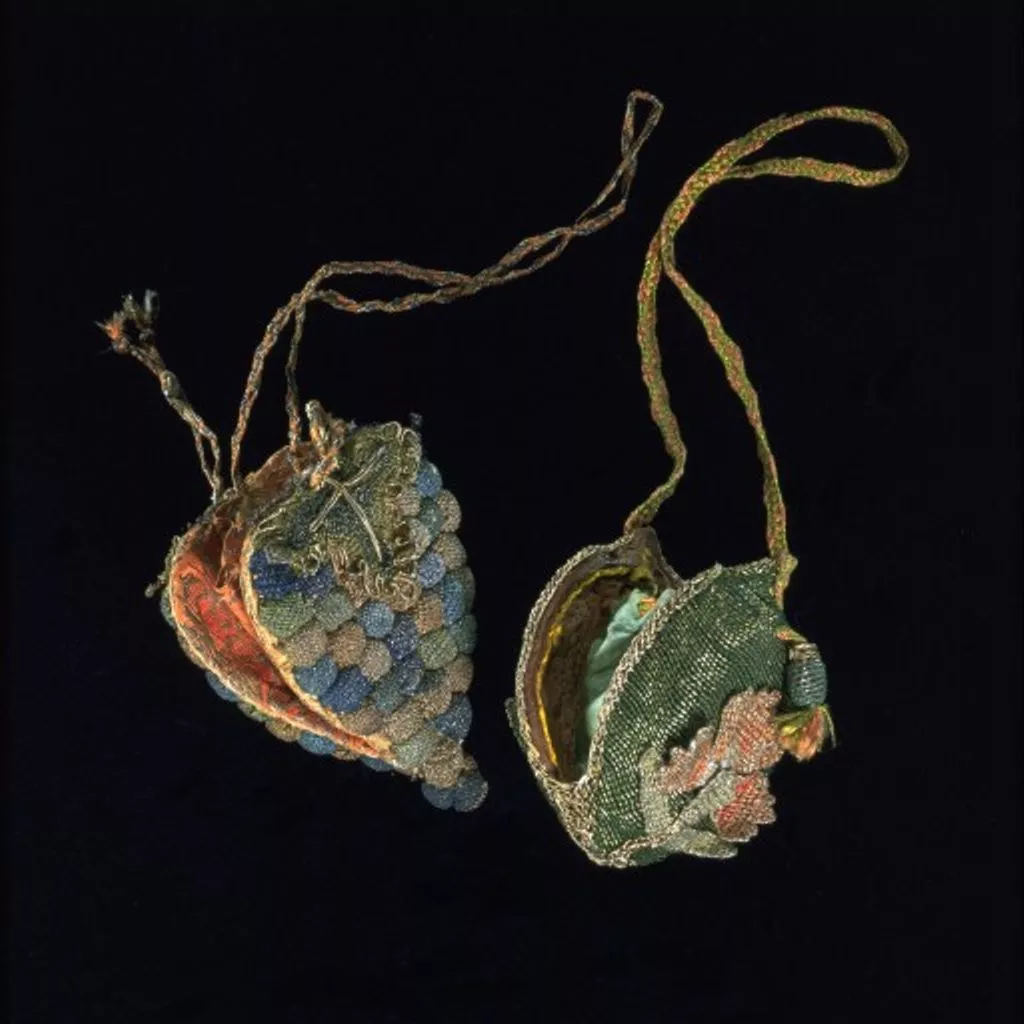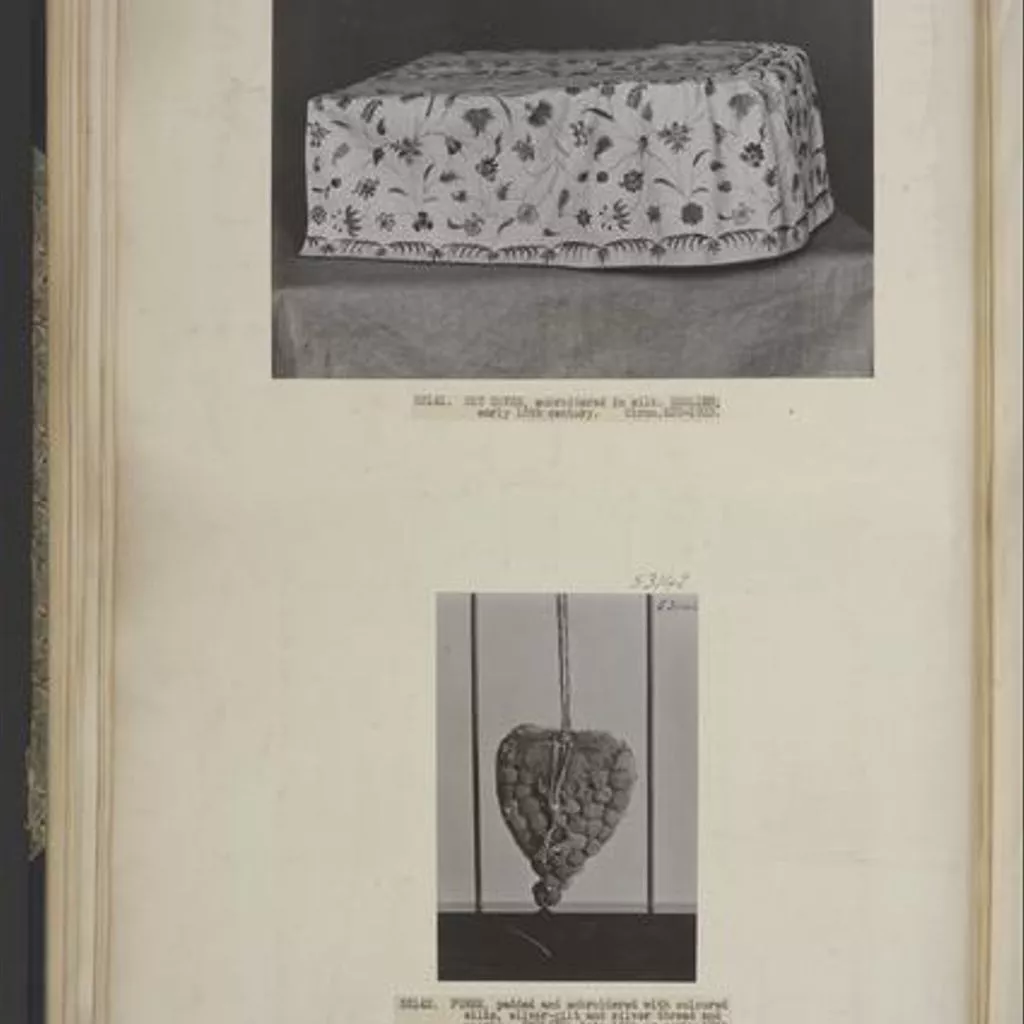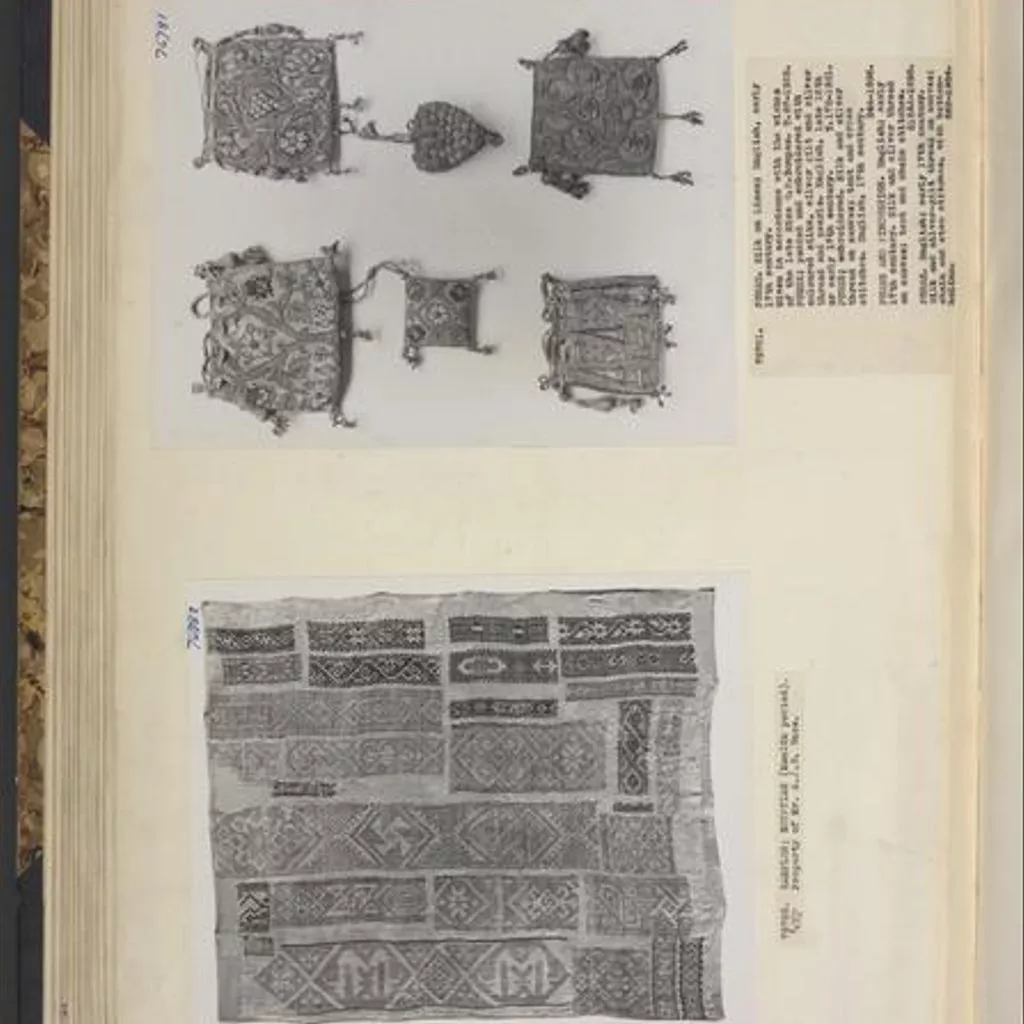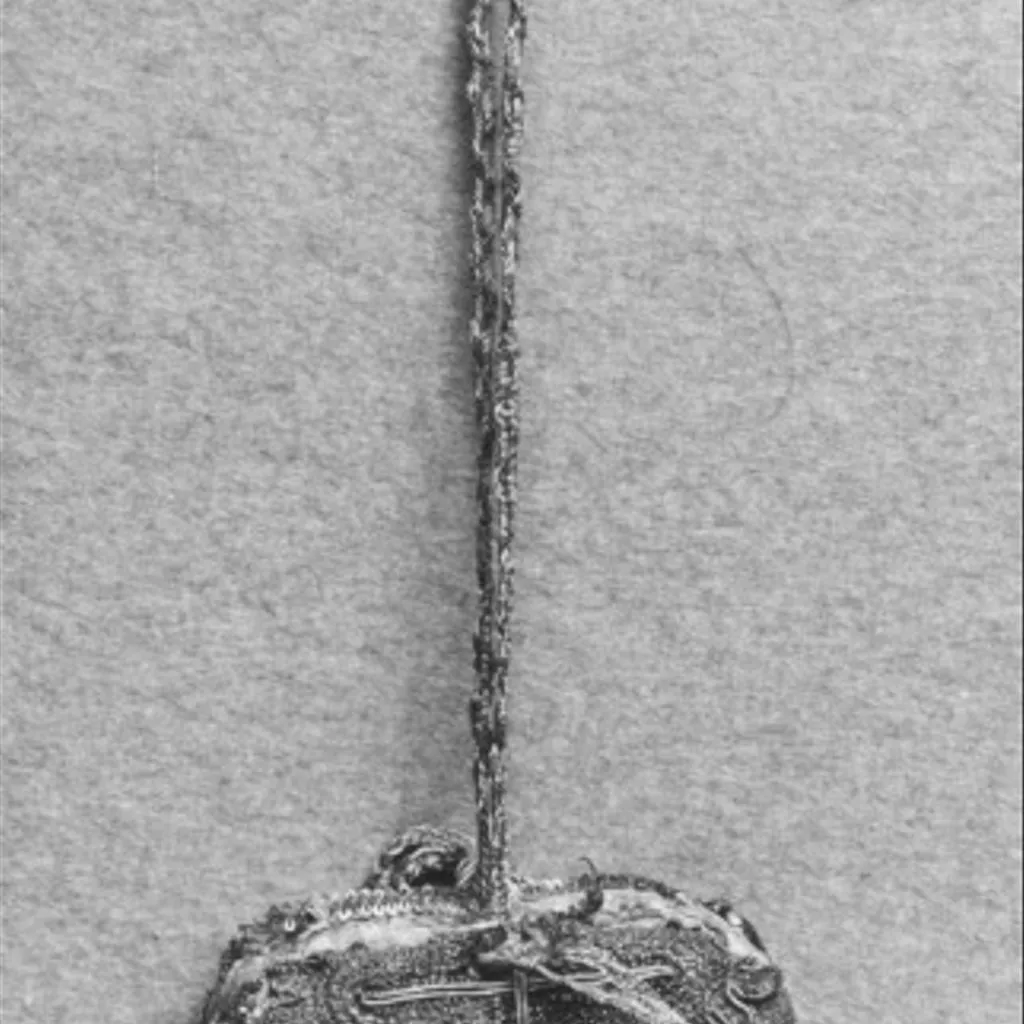1600 / 1625, England
1600 / 1625, England
- Identifier
- T.172-1921
- Acquisition
- Given by M. Stapleton
- Collection
- Material
- Technique
- Depiction
- Floral motif 65%

- Floral motif 58%

- Geometrical motif 51%

- Geometrical motif 48%

- Geometrical motif 68%

- Geometrical motif 44%

- Geometrical motif 42%

- Geometrical motif 59%

- Floral motif 65%
- Dimension
- 3 cm (depth)3 cm (depth)8 cm (height)8 cm (height)23.5 cm (height)6 cm (width)5.5 cm (width)
- Production time
- Production place
- Type of object
Description
In the 17th century, decorative purses such as this one were rarely used to carry money, as their wealthy owners engaged in few commercial exchanges requiring cash. In addition to serving as 'sweet bags' or 'gift wrapping', purses sometimes contained mirrors for grooming. Others functioned as sewing kits that held needles, thread and tiny scissors.
Designs & Designing
The Jacobeans loved imitating natural forms in their decorative arts and this purse has been made in the shape of a bunch of grapes. Each grape was worked in the colours of blue, purple, green or brown. Originally each had a pearl in the centre, but only two of these remain. A vine leaf has been worked at the top in three shades of green and silver purl.
Materials & Making
The three-dimensional nature of the embroidery is achieved through the use of deep padding under detached buttonhole stitch. The threads over each grape are worked independently of the fabric below and attached only around the edges. The purse is hinged at the bottom and opens to reveal an inner lining of red silk and silver brocade. embroidered, 1600-1629, English; In form of bunch of grapes Linen embroidered with coloured silks, silver-gilt and silver thread and pearls, with padded buttonhole stitch and tasselled cords. British Galleries: PURSES
Purses were a common dress accessory and often very ornate. In the days before regular bathing, body odours were masked with 'sweet bags' containing perfumed powder or dried herbs. Purses also held mirrors or sewing equipment. Presents of donations of money could be 'gift wrapped' in a purse. [27/03/2003]
